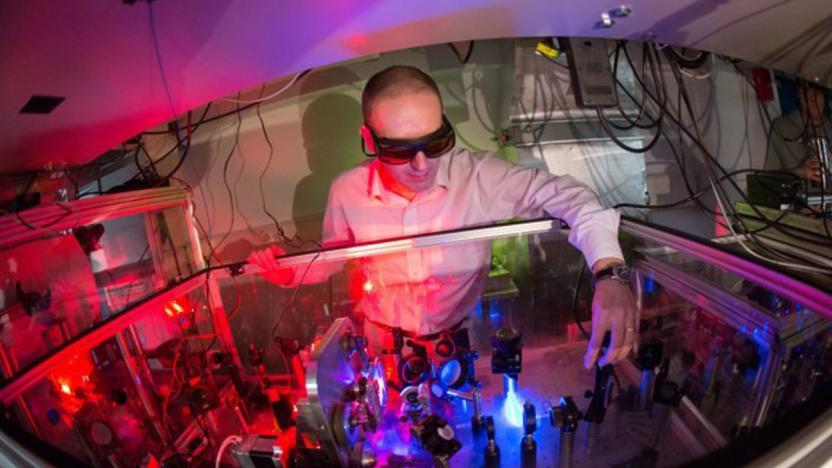ChemicalReaction
Latest

Ultrafast lasers capture elusive photosynthesis reactions
Using ultra-rapid lasers, researchers have created the first "movie" of photosynthesis chemical reactions that shows exactly how fast they happen. The finding proves that a key process that strips electrons from water, starting the conversion of solar into chemical energy, happens more quickly than previously thought. "We can now see how nature has optimized the physics of converting light energy to fuel," says study author Jasper van Thor. The work could help scientists improve artificial photosynthesis to produce biofuels more efficiently.

Quantum computers show potential to revolutionize chemistry
If you have trouble wrapping your mind around quantum physics, don't worry -- it's even hard for supercomputers. The solution, according to researchers from Google, Harvard, Lawrence Berkeley National Laboratories and others? Why, use a quantum computer, of course. The team accurately predicted chemical reaction rates using a supercooled quantum circuit, a result that could lead to improved solar cells, batteries, flexible electronics and much more.

Study shows love for music relates to brain chemical, not to My Chemical Romance
It would make sense that people listen to music for the sheer pleasure of it, right? That's what we thought, but apparently there's a scientific reason for this. Scientists have discovered that when Earthlings listen to pleasurable music, one particular chemical is loosed in the gord. The study, conducted by Robert Zatorre and Valorie Salimpoor of McGill University in Montreal, concluded that when the participants tuned into instrumental pieces they were familiar with, their brains released dopamine into the striatum -- an area of the noggin linked with anticipation and predictions. According to PET scans, the members of the study unleashed the chemical 15 seconds before a climaxical moment in a song, signaling the possibility that humans may actually release it in anticipation and not as a reaction to a wailing solo. Bonus point? Chopped and screwed tracks unleashed forty times more dopamine. Just kidding, but it's probably true.

Portable splint instantly hardens around broken limbs
If you always thought the inkjet approach to healing broken bones was too much of a stretch, you'll probably be interested in the plastic portable splint. Designed by Ching-Sui Kao, Geremi Durand, and Maxime Ducloux, the device is intended to be used by extreme sports participants (guess that includes Wii Sports?) that typically set records in either completion times or amount of damage done to their bodies, and can set your newly-broken limb into place right on the side of the mountain. By wrapping the limb with a set of flexible plastic strips, linking them up with Velcro, and finally applying a sodium citrate-based gel over top, a chemical reaction creates a rigid structure that forms a cast around the arm or leg. Of course, doctors can remove the material at the hospital and apply a more medically-approved rendition, but if you're looking for an easy way to excuse yourself from class or work without actually forging a doctor's note, here's your ticket.

